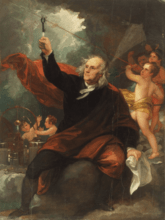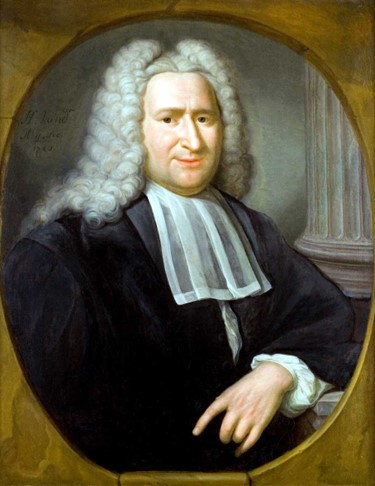This year, Iceland once again proved itself to be a volcanic island: on February 8, 2024 several volcanoes started to produce huge eruptions. Perhaps the most famous outburst was that of June 8, 1783, when the Laki volcanic fissure erupted. It was the start of an eight-month-long series of violent explosions which threw up such enormous clouds of ash that much of the northern hemisphere was affected. Large parts of the population of north-western Europe worried about this haze they called ‘dry mist’. Many scholars regarded these evil vapors as the main cause of the extreme summer heat and the subsequent extraordinary frequency of thunderstorms that year. According to an early-modern theory, thunderstorms were caused by the spontaneous combustion of sulphurous and nitrous vapors in the air. After all, wasn’t it a burning sulphur rain that destroyed godless Sodom?
Some believed that the earthquakes in Calabria that began on 5 February of that same year, 1783, were also the result of exploding sulphurous and nitrous fumes. Subterranean explosions combined with hypogeal fire (fire just below the earth’s surface) were believed to cause volcanic eruptions, but when some of the vapors remained undischarged, earthquakes were the inevitable result. In both cases, such large quantities of fumes containing such a high level of sulphur were released into the atmosphere that they constituted “a kind of aerial gunpowder,” resulting in thunderstorms. This is not as unfounded as it may sound: some volcanic eruptions are actually accompanied by frequent lightning. This can be seen in this video of the eruption of the Taal volcano in the Philippines, dating from March 2022.

Benjamin Franklin Drawing Electricity from the Sky by Benjamin West (ca. 1816)
So, in early modern times earthquakes were seen as subterranean thunderstorms and thunderstorms as superterrestrial earthquakes. It was that supposition that caused Benjamin Franklin in 1737 to induce that thunder, lightning, and earthquakes were materially related. In each case, sulphur was to blame. Many shared the view, widely held in the chemical mindset of the time, that electricity itself had a sulphurous character.
Franklin’s Kite Experiment
It took quite some time before it could be demonstrated that lightning was electrical in character. In 1749 Benjamin Franklin argued that the artificially generated electricity to which he exposed his scale models and the natural discharge of lightning were basically identical. But it was not until 1752 that he managed to prove, with his kite experiment, that his reasoning was correct: both artificial and natural electricity could produce sparks and give shocks.
In June 1752 Franklin conducted his famous kite experiment in Philadelphia. The kite he flew was made from a large silk handkerchief kept rigid by two light strips of cedar wood, with a pointed metal tip extending from the vertical strip. At the bottom of the kite string a key was attached with a silk ribbon tied to it. As silk is non-conducting, this way Franklin could hold onto the kite. When a storm cloud passed, sparks flew from the key to the knuckles of his hand.
The kite also proved to be a suitable instrument for charging a so-called Leyden jar, a capacitor invented by the Dutch professor Petrus van Musschenbroek (1692-1761) that made it possible to store electricity. Franklin’s successful experiment created the possibility to pluck the charge from the clouds with a pointed metal rod and conduct the atmospheric electricity to a place where it could not do any harm. The lightning conductor was born.

Portrait of Petrus van Musschenbroek, by Hieronymus van der Mij (1687-1761), Icones Leidenses 147, socrates.leidenuniv.nl
In the 1750s Franklin’s invention was already being copied to a certain extent in British America. With slight hesitation, Europe followed soon, as we will see in the next blog. One of the first American cities with a lightning conductor was Boston. The local Reverend Thomas Prince (1687-1758) however seemed quite certain that Franklin’s invention was actually dangerous, an opinion shared by many others. They feared that lightning rods would drain so much sulphurous “lightning matter” from the air to the ground that massive earthquakes would occur – a line of reasoning a pastor used to explain the earthquake in Massachusetts on 18 November 1755, and to express his (religious) opposition to lightning rods.
But what about the Netherlands? Find out in that in next week’s episode: A New Invention: Franklin and the Netherlands.
 Jan Wim Buisman (1954) is a retired Lecturer on the History of Christianity, with a special focus on the early modern period. He is now affiliated as guest researcher at the Leiden University Centre for the Study of Religion. He has written extensively on the history of religious mentalities and the impact in the Netherlands of natural disasters on views of God, man, and nature, between 1750 and 1830. Click here to order the book, ‘Lightning in the Age of Benjamin Franklin: Facts and Fictions in Science, Religion and Art’ by author Jan Wim Buisman. Use discount code jai50.
Jan Wim Buisman (1954) is a retired Lecturer on the History of Christianity, with a special focus on the early modern period. He is now affiliated as guest researcher at the Leiden University Centre for the Study of Religion. He has written extensively on the history of religious mentalities and the impact in the Netherlands of natural disasters on views of God, man, and nature, between 1750 and 1830. Click here to order the book, ‘Lightning in the Age of Benjamin Franklin: Facts and Fictions in Science, Religion and Art’ by author Jan Wim Buisman. Use discount code jai50.
(top image: or Oliver Spalt (talk·contribs), http://www.artweise.de via Wikimedia Commons)




